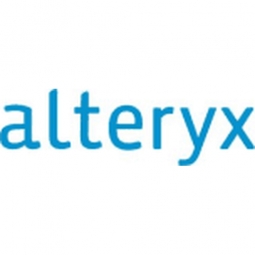下载PDF
Schneider Electric Drives Front-Office Efficiency with Alteryx
技术
- 分析与建模 - 数据即服务
适用行业
- 电子产品
- 公用事业
适用功能
- 销售与市场营销
用例
- 质量预测分析
服务
- 数据科学服务
挑战
施耐德电气是一家全球能源管理专家,该公司面临着识别高潜力客户和有效部署销售资源的挑战。该公司采用手动方式确定如何以及在何处部署销售资源,这既耗时又低效。销售运营部门和 20 多名销售经理将与分析团队合作,收集数据并评估与每个客户账户相关的众多因素,包括账户规模、垂直市场以及增长和购买历史。这个过程不仅缓慢,而且导致销售团队等待新年开始所需的信息,通常要到二月份才能收到。
关于客户
施耐德电气是全球能源管理专家,业务遍及 100 多个国家,拥有 15 万名员工。该公司为多个细分市场提供集成解决方案,包括公用事业和基础设施、工业和机器制造商、非住宅建筑以及数据中心和网络。2013 年,该公司的销售额接近 240 亿欧元,致力于让能源变得安全、可靠、高效、高效和环保。施耐德电气的分析团队负责监督数据质量、数据准确性、轮询数据和增强数据。
解决方案
施耐德电气决定将 Alteryx Analytics 集成到其客户选择流程中。Alteryx 用于自动收集、管理和融合内部和第三方数据,在不到以前所需时间的一半的时间内为销售团队提供深入的见解。这种集成立即加快了公司高潜力客户名单的创建速度。通过比以往更快地从更多数据源提供更深入的见解,分析团队使销售团队能够以强劲的势头开始新的一年。
运营影响
数量效益
相关案例.

Case Study
IoT Solutions for Smart City | Internet of Things Case Study
There were several challenges faced: It is challenging to build an appliance that can withstand a wide range of voltage fluctuations from as low at 90v to as high as 320v. Since the device would be installed in remote locations, its resilience was of paramount importance. The device would have to deal with poor network coverage and have the ability to store and re-transmit data if networks were not available, which is often the case in rural India. The device could store up to 30 days of data.

Case Study
Remote Temperature Monitoring of Perishable Goods Saves Money
RMONI was facing temperature monitoring challenges in a cold chain business. A cold chain must be established and maintained to ensure goods have been properly refrigerated during every step of the process, making temperature monitoring a critical business function. Manual registration practice can be very costly, labor intensive and prone to mistakes.

Case Study
Automation of the Oguz-Gabala-Baku water pipeline, Azerbaijan
The Oguz-Gabala-Baku water pipeline project dates back to plans from the 1970’s. Baku’s growth was historically driven by the booming oil industry and required the import of drinking water from outside of the city. Before the construction of the pipeline, some 60 percent of the city’s households received water for only a few hours daily. After completion of the project, 75 percent of the two million Baku residents are now served around the clock with potable water, based on World Health Organization (WHO) standards. The 262-kilometer pipeline requires no pumping station, but uses the altitude differences between the Caucasian mountains and the capital to supply 432,000 m³/d to the Ceyranbatan water reservoir. To the people of Baku, the pipeline is “the most important project not only in 2010, but of the last 20 years.”

Case Study
GPRS Mobile Network for Smart Metering
Around the world, the electricity supply industry is turning to ‘smart’ meters to lower costs, reduce emissions and improve the management of customer supplies. Smart meters collect detailed consumption information and using this feedback consumers can better understand their energy usage which in turn enables them to modify their consumption to save money and help to cut carbon emissions. A smart meter can be defined in many ways, but generally includes an element of two-way communication between the household meter and the utility provider to efficiently collect detailed energy usage data. Some implementations include consumer feedback beyond the energy bill to include online web data, SMS text messages or an information display in consumers’ premises. Providing a cost-effective, reliable communications mechanism is one of the most challenging aspects of a smart meter implementation. In New Zealand, the utilities have embraced smart metering and designed cost effective ways for it to be implemented. The New Zealand government has encouraged such a move to smart metering by ensuring the energy legislation is consistent with the delivery of benefits to the consumer while allowing innovation in this area. On the ground, AMS is a leader in the deployment of smart metering and associated services. Several of New Zealand’s energy retailers were looking for smart metering services for their residential and small business customers which will eventually account for over 500,000 meters when the multi-year national deployment program is concluded. To respond to these requirements, AMS needed to put together a solution that included data communications between each meter and the central data collection point and the solution proposed by Vodafone satisfied that requirement.

Case Study
NB-IoT connected smart meters to improve gas metering in Shenzhen
Shenzhen Gas has a large fleet of existing gas meters, which are installed in a variety of hard to reach locations, such as indoors and underground, meaning that existing communications networks have struggled to maintain connectivity with all meters. The meter success rate is low, data transmissions are so far unstable and power consumption is too high. Against this background, Shenzhen Gas, China Telecom, Huawei, and Goldcard have jointly trialed NB-IoT gas meters to try and solve some of the challenges that the industry faces with today’s smart gas meters.






